Photographing Sussex ruins on Large Format Posted On 27th February 2024 To Magazine & Stories

Asphalt Kingdom
When I was 15 I picked up my mum’s old and now scarcely used Soligor TM (a cheap 35mm SLR). Having seen a few friends shoot colour film on disposables, I remember thinking “I like how it looks but do they even make film anymore?”. I spoke to my step-dad about where I might find some of this film and he quickly pointed me in the direction of ILFORD, a film manufacturer who’s film he’d stood by for many-a-year (something I’m intent on standing by too). A google search and three clicks later my eyes were gifted with a rolling monochromatic panopticon of tonal pleasure, instantly I knew this was the film for me. Almost 10 years later I stand before a jaunty pile of bricks with an Ebony SW45ti large format camera eagerly pointed in its direction, this once impressive castle was to be the next photograph in my latest body of work “Asphalt Kingdom”. Why you might ask?
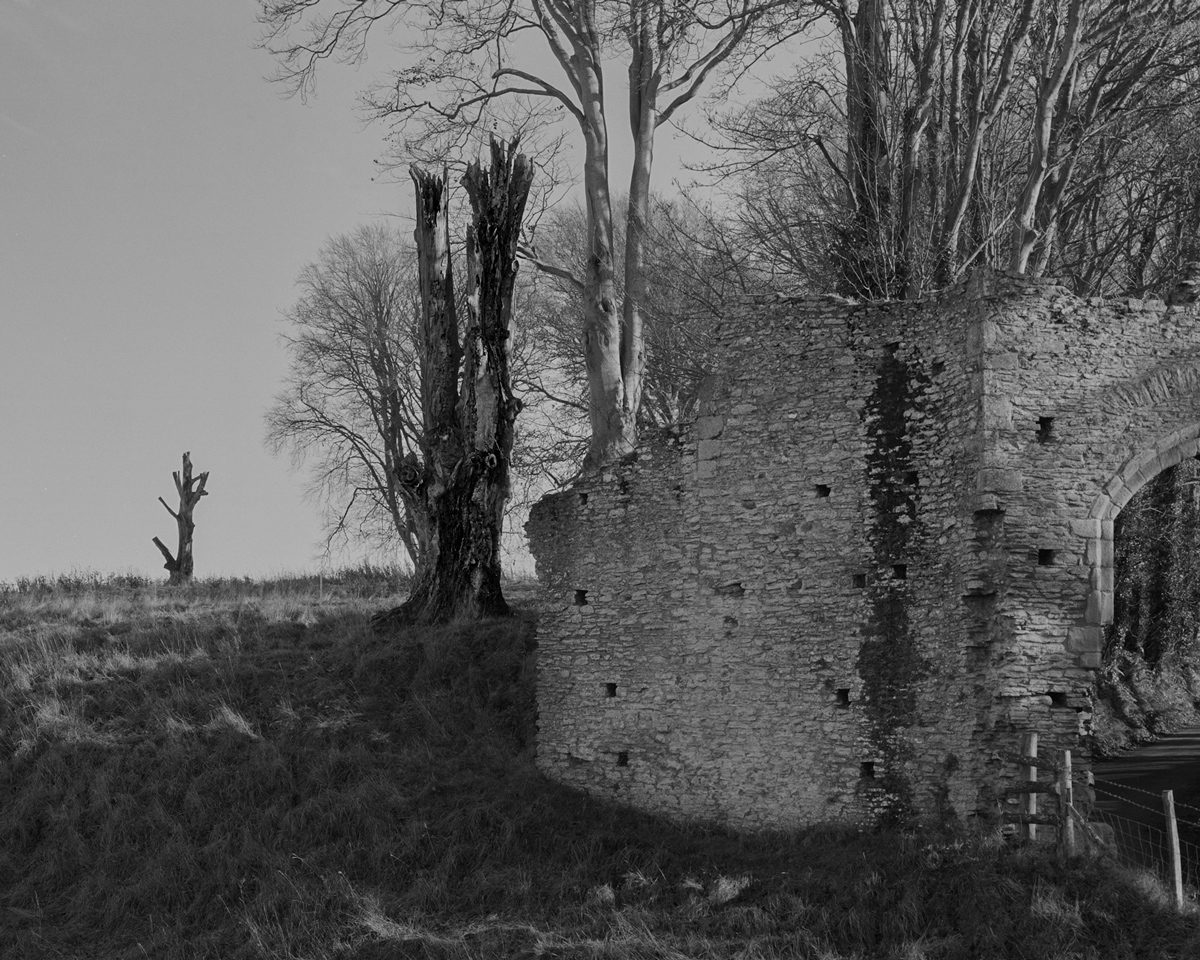
Winchelsea||NewGate
The Previous Night
It’s 10pm, I’m currently a 1st year Undergraduate at University of Brighton and I’m trawling online for old ruins in Sussex to find locations for my ‘place module’ project which I’ve named Asphalt Kingdom. This body of work was to be an examination of monolithic ruins still standing around the county, buildings that seemingly cease to disappear, they stand in an in-between state between permanence and decay. I’d already found a few, a gable end in Winchelsea, a Roman wall defence in Pevensey and Lewes Priory in, well, Lewes.. But what was this? Upon my screen stood a large tall structure like nothing I’d seen before, I’d never heard of Bramber or what remained of its Castle. I knew that tomorrow I was making the journey from St. Leonards in East Sussex to Bramber, a small village situated in West Sussex.
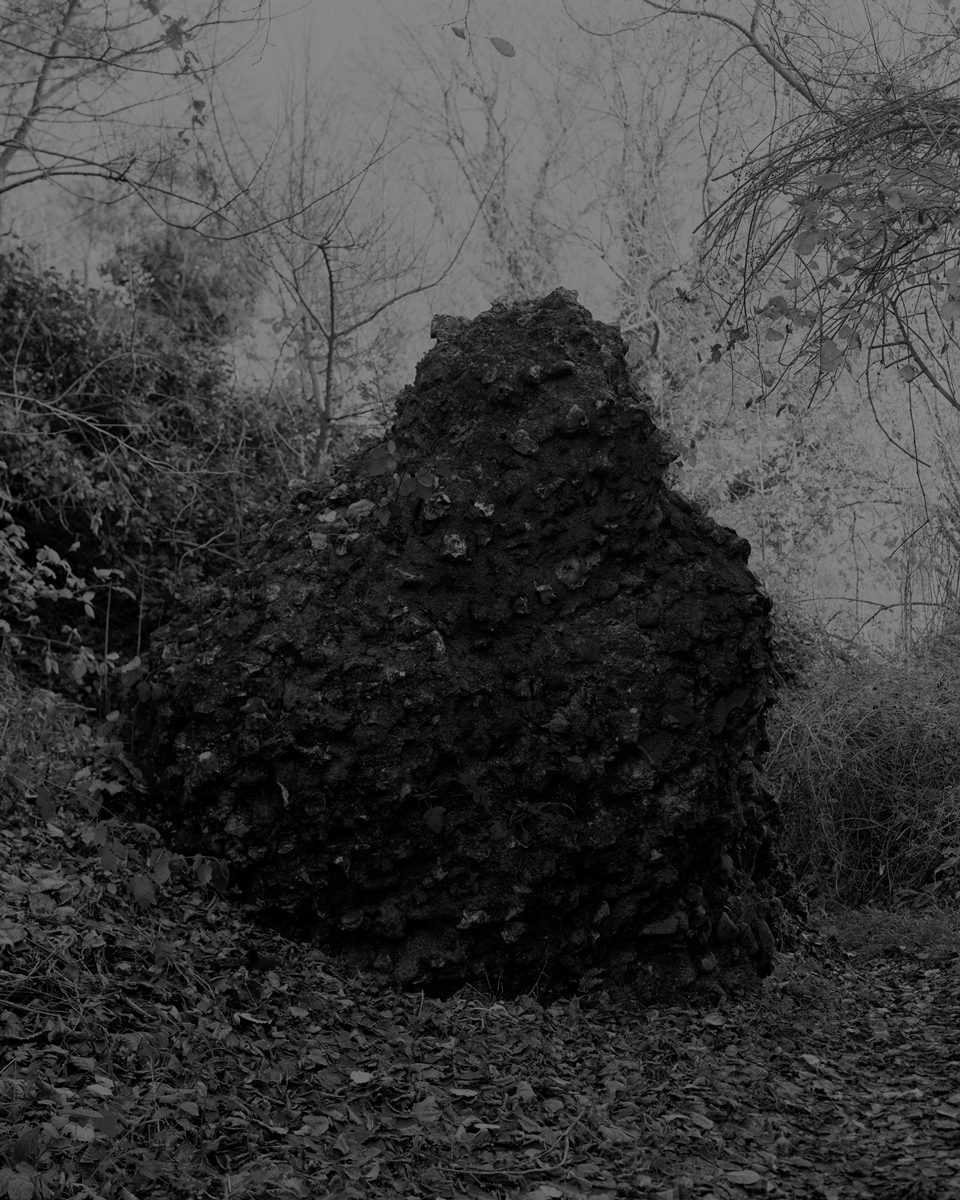
Fallen Wall
5x4 Film Holders
I quickly grabbed an assorted mix of ten 5x4 film holders, some ILFORD HP5+ sheet film, killed the lights and got under the covers of my bed to load them up. A ritual that seems to have worked well so far, I don’t own a loading bag so I’ve adopted this one for loading at home. It’s a little precarious but unsurprisingly comfortable. I went to sleep.
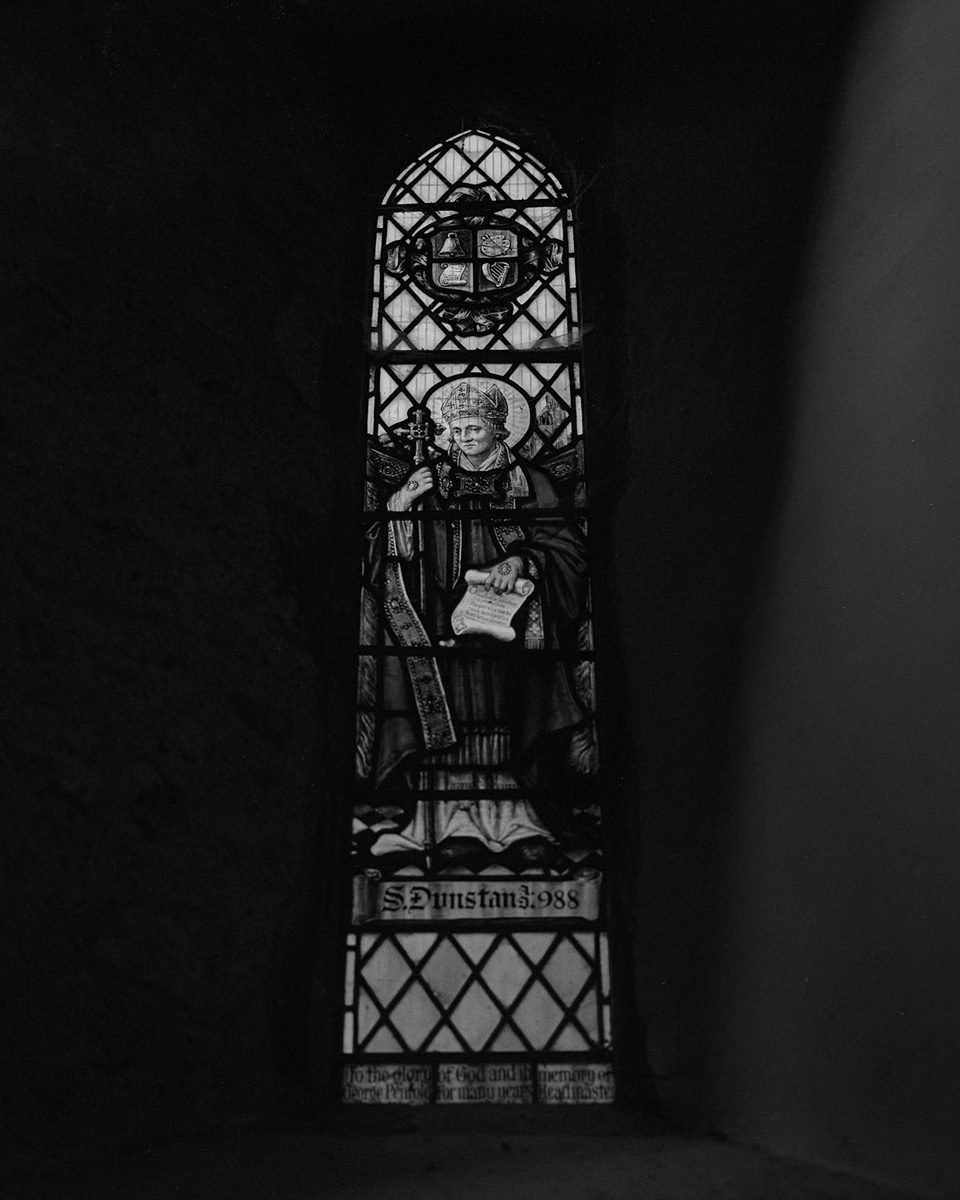
Pevensey Church
Bramber Castle
5am, I’m never up at 5am, I’m sometimes asleep by 5am but this is a new level of photographic commitment for me; I can feel my eyes arguing with the light as I switch my bedside lamp on. I get ready, make sure I have all my gear and leave for the hour and a half train journey to Brighton. From Brighton I make a connecting bus journey, another hour or so, to the little village of Bramber.
As I alight the bus, and walk up the somewhat steep hill to the ruins, I’m greeted by “The oldest Saxon Church in Sussex”, something that now I think about it is somewhere I’ve always wanted to visit but didn’t expect to visit today. I knew I was going to check that out on the way out. I look up and there it is, taller and more ruinous than I ever expected. Bramber Castle.
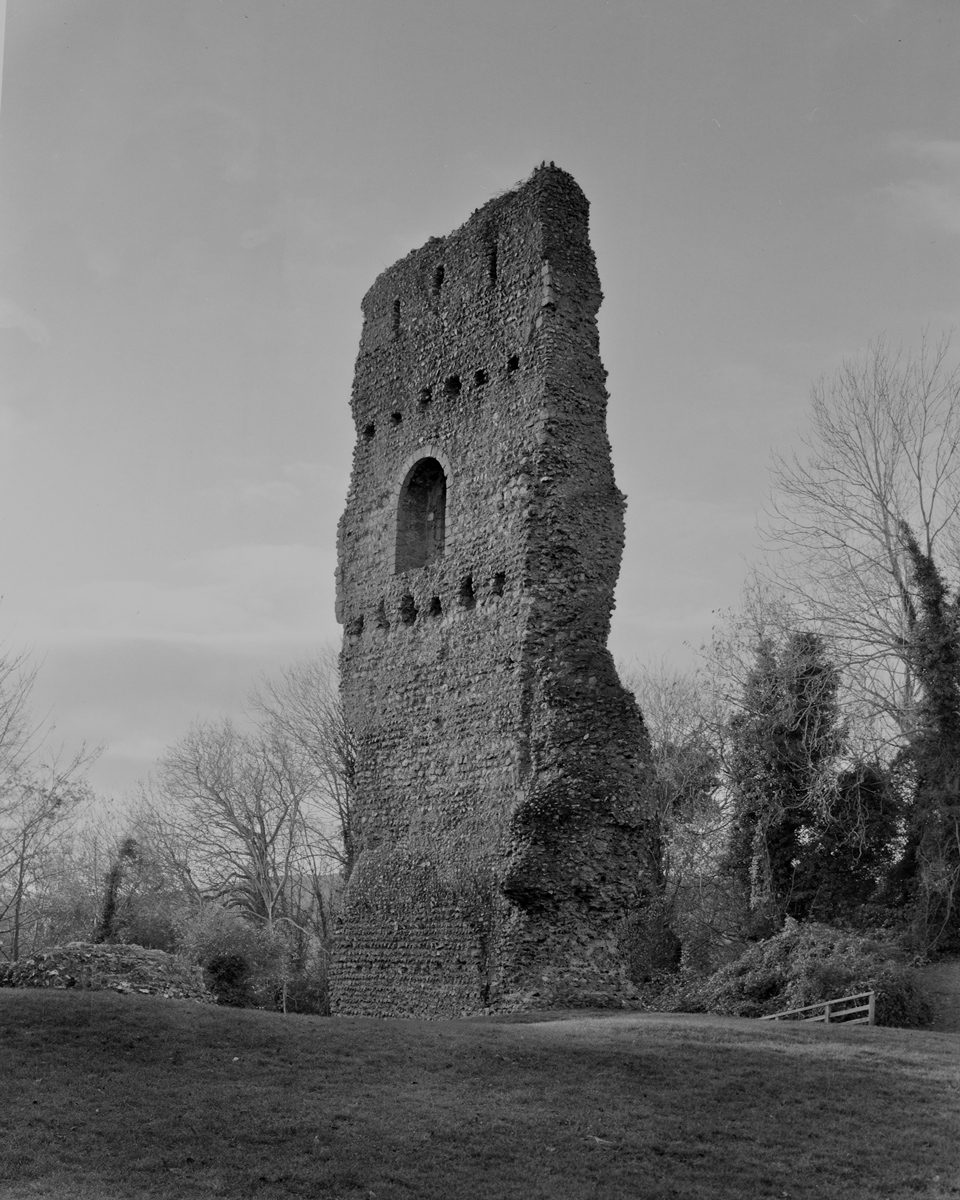
Bramber Castle
Started to Compose
I had already envisaged where I would take the photograph from. In addition, I like to photograph these aged wrecks of stone as I would a person, often employing some kind of 45 degree pose as to me it adds a nice bit of depth to the photograph. I set up my tripod and placed the impressively lightweight Ebony on top of it and locked it in.
Darkcloth
My current Darkcloth is an Arc’teryx Zeta SL lightweight waterproof jacket, again, I don’t own a real darkcloth and this jacket folds up to the size of a small water bottle so it makes for a perfect waterproof darkcloth. So I slung that over the Ebony and started to compose my photograph. This body of work, compositionally, is quite straight forward - I don’t have to think too much about it, the compositions are very much centre-weighted portraits of old ruins and that’s about as deep as it gets. I slid in the film holder, took some exposure readings with the Sekonic L-758d and got a nice reading, I’m sure it was something along the lines of 1/2th at f/16. I Set my lens accordingly, readied the shutter, removed the darkslide and made the photograph.
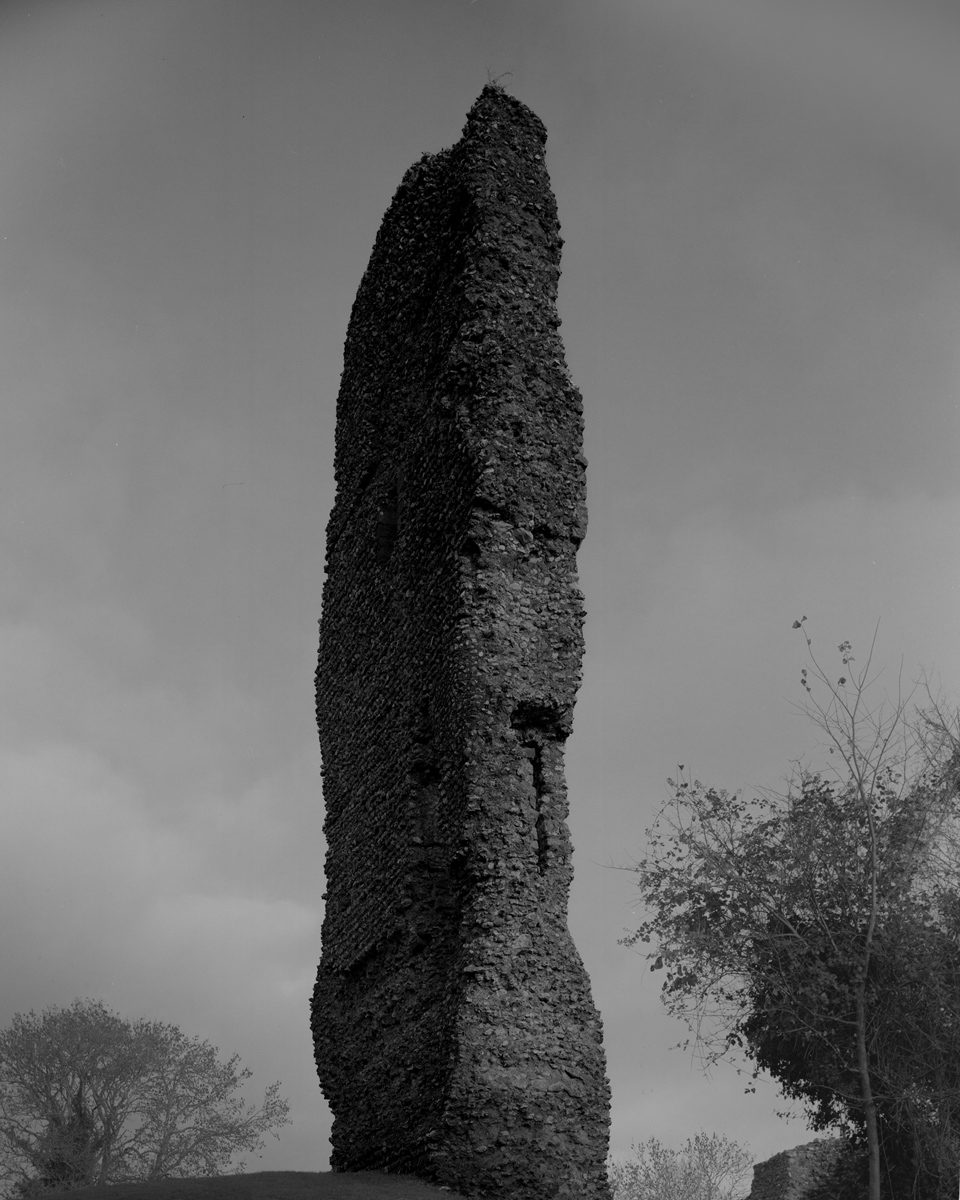
Bramber Castle Back
Theology and the Sussex Landscape
After making the photograph of Bramber Castle I had to check out ‘The Oldest Saxon Church in Sussex’, it was small, I just about squeezed through the door with a tripod hanging from my shoulder. Old paintings seeped through the aged walls still gesturing at its history.
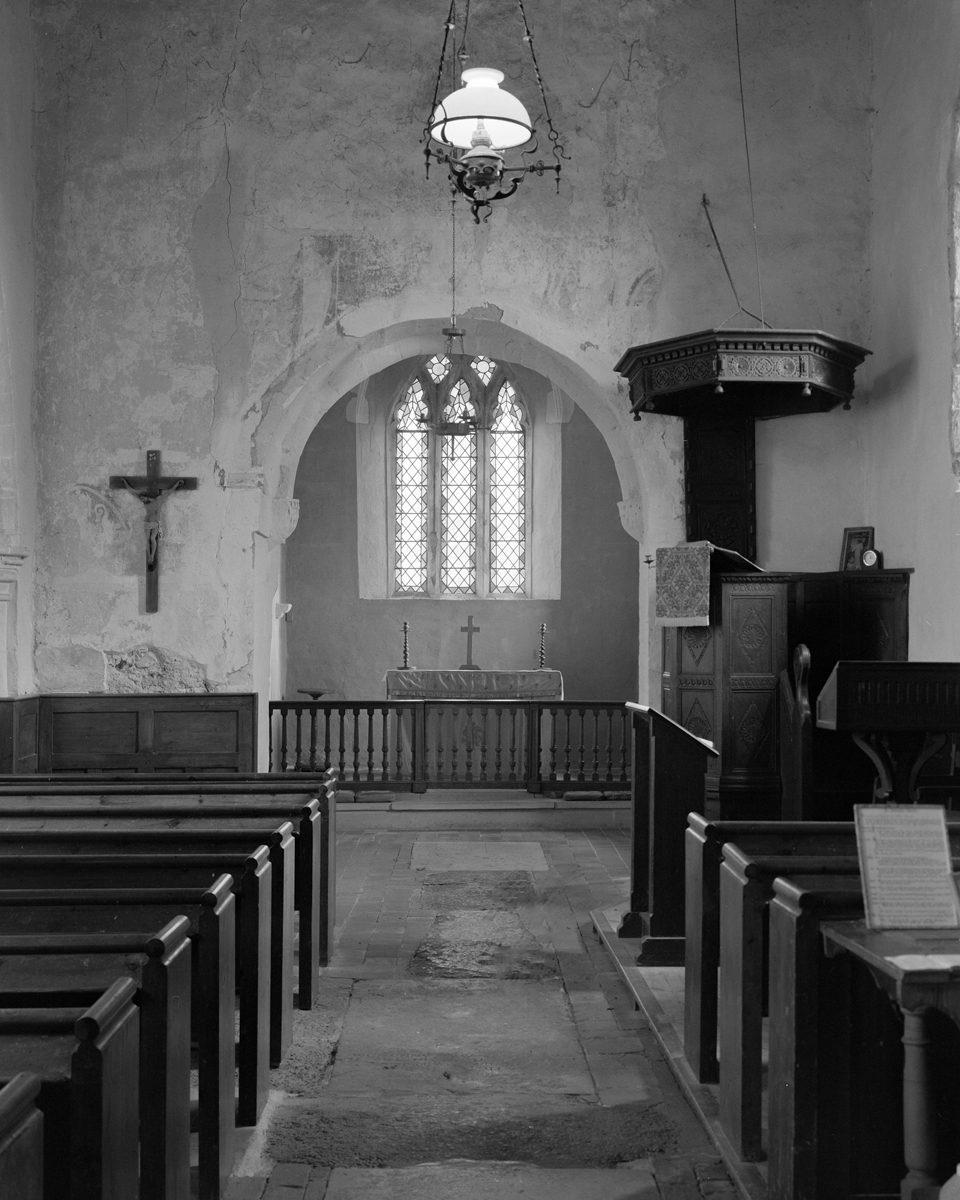
Diverse History
A thought began to emerge. Faith, as far back as it stretches, was everywhere and has left vast topographical impressions on the English landscape - it shaped our Kingdoms, led them to war, it crafted ideologies and ideals now seamlessly blended into society. These ruins in the small Kingdom of Sussex stand as an emblematic waymarker in our long and diverse history.
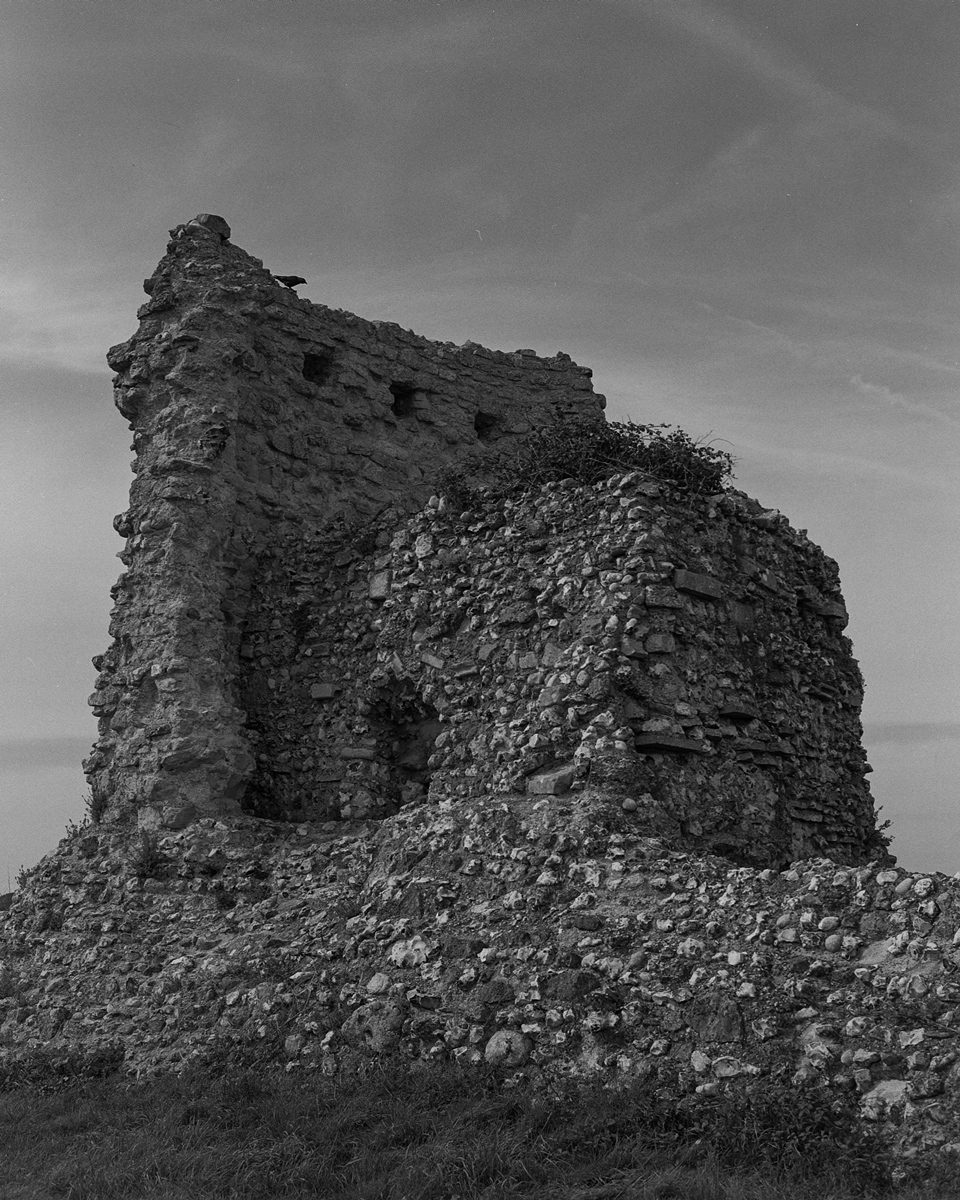
Pevensey_RomanWall
Faith was at the centre
Upon visiting these impressive structures it came with no revelation that within the near vicinity I would find a place of worship, always still intact within this brine battered sweep of hills, ditches and clay rich flatlands. A quick google told me that 560+ Anglican places of worship are still firmly nestled within the 1,461 square miles of Sussex, a county and once the final Anglo-Saxon Kingdom to be christianised (680AD). That’s a church for every 2.6 square miles of land - and it’s no surprise if we look back; faith was at the centre of our culture after St. Wilfred had raised his blessed hand up to the masses, it explained the unexplainable and seeded decisions of the few in power with righteous cause.
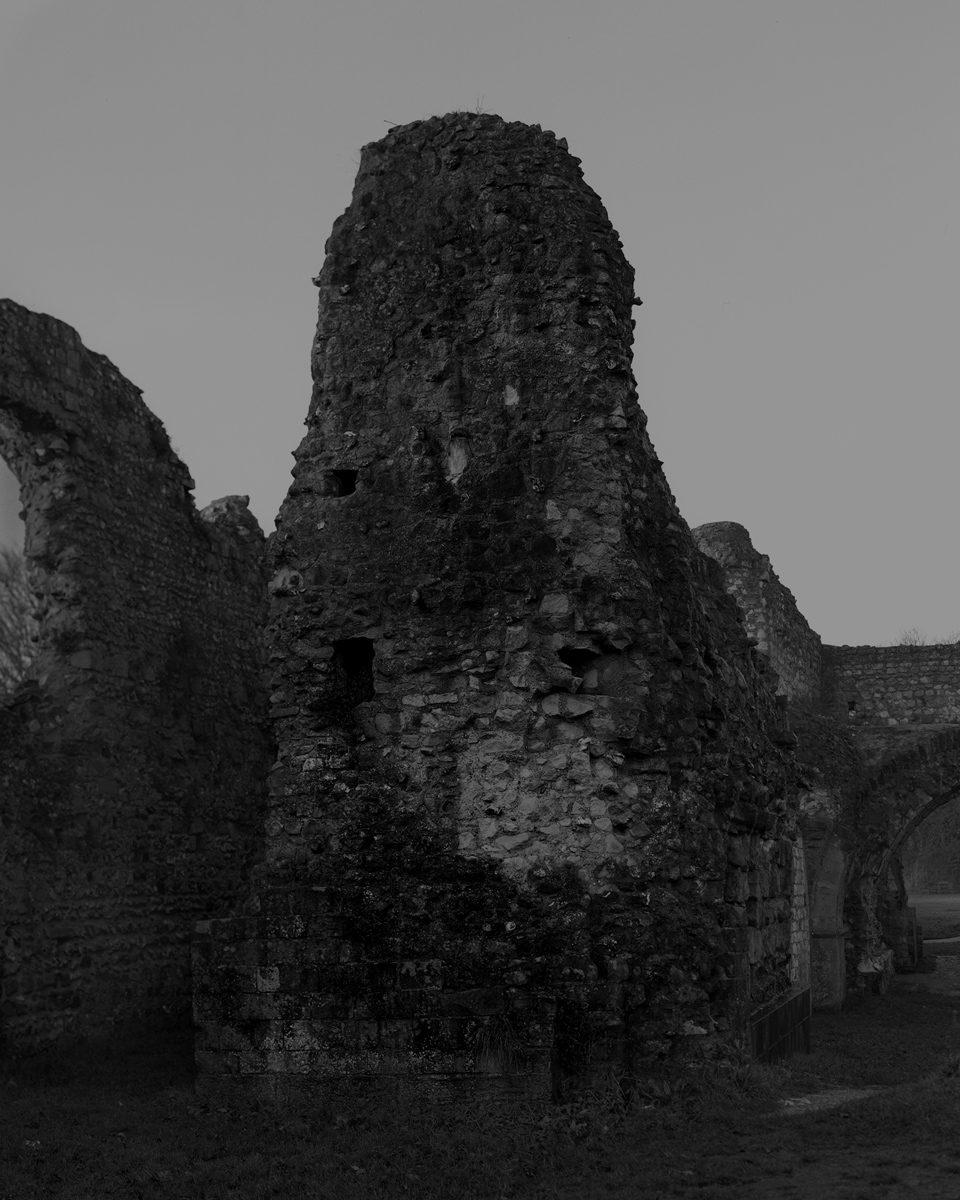
Lewes Priory
The Turning Point
This was a turning point for my project and I realised that as I stood within these four faithful walls. I hopped onto google maps and found another church, 11th century and a 15 minute walk. I still had time to saunter on down before my bus, so I did just that. A quick walk over mud and gravel with the Ebony on the tripod over my shoulder and another small rural church hit my gaze. This once had a very interesting layout of graves, not something I’d ever seen before, I had to photograph this.
My project had evolved into something else, it was now a depiction of the theological impact on the Sussex landscape, as someone who doesn’t subscribe to any particular religion but finds the historical and cultural importance of them fascinating, this excited me.
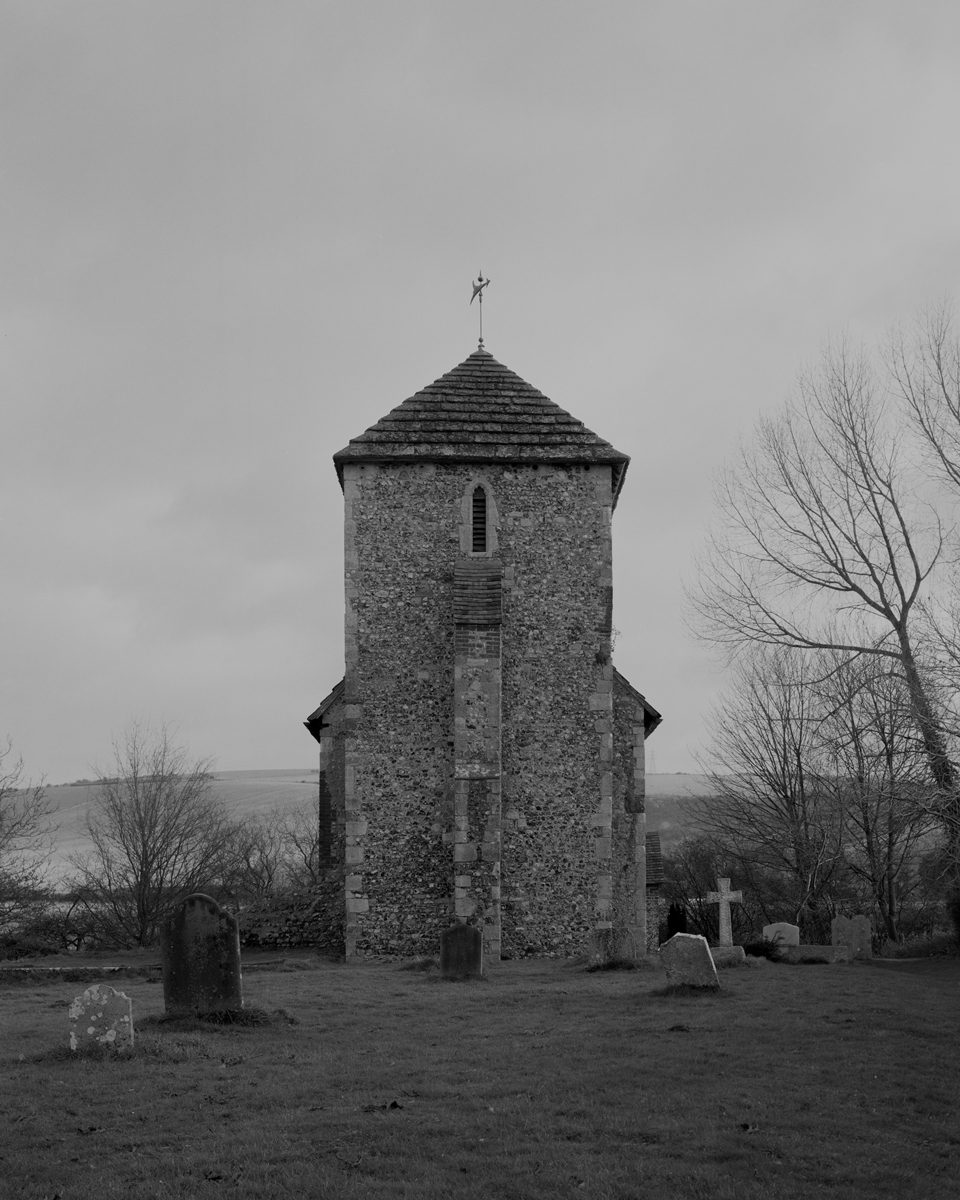
St. Botolphs
Developing + Printing
I took the bus back to Brighton, walked to my university and headed straight down to the darkroom. Picked up a patterson dev tank and a Mod54 sheet film holder and plunged myself into darkness. The tank was loaded and a not so quick 20 minute splash of ID11 (1+3 dilution) later followed by some stop and fix of course and I was on my way to seeing the photographs I had made.
After I had made a 20 minute introduction of my negatives to the dry cabinet, I of course wanted to print them! II had been invited to an Xmas photography fair run by Ian Land of local publishers Silverhill Press. I was to sell my photobook “Beneath Mercia” published by Unit33 and some Silver Gelatins too. So I headed to the enlarger and began to make some prints. I ended up making three separate prints in an edition of 5 on 8x10” ILFORD Deluxe Pearl. A therapeutic end to this trip.
You can follow the development of this project on my instagram where I will be posting frequent updates on it over the christmas period, English ruins.. not very festive I know.
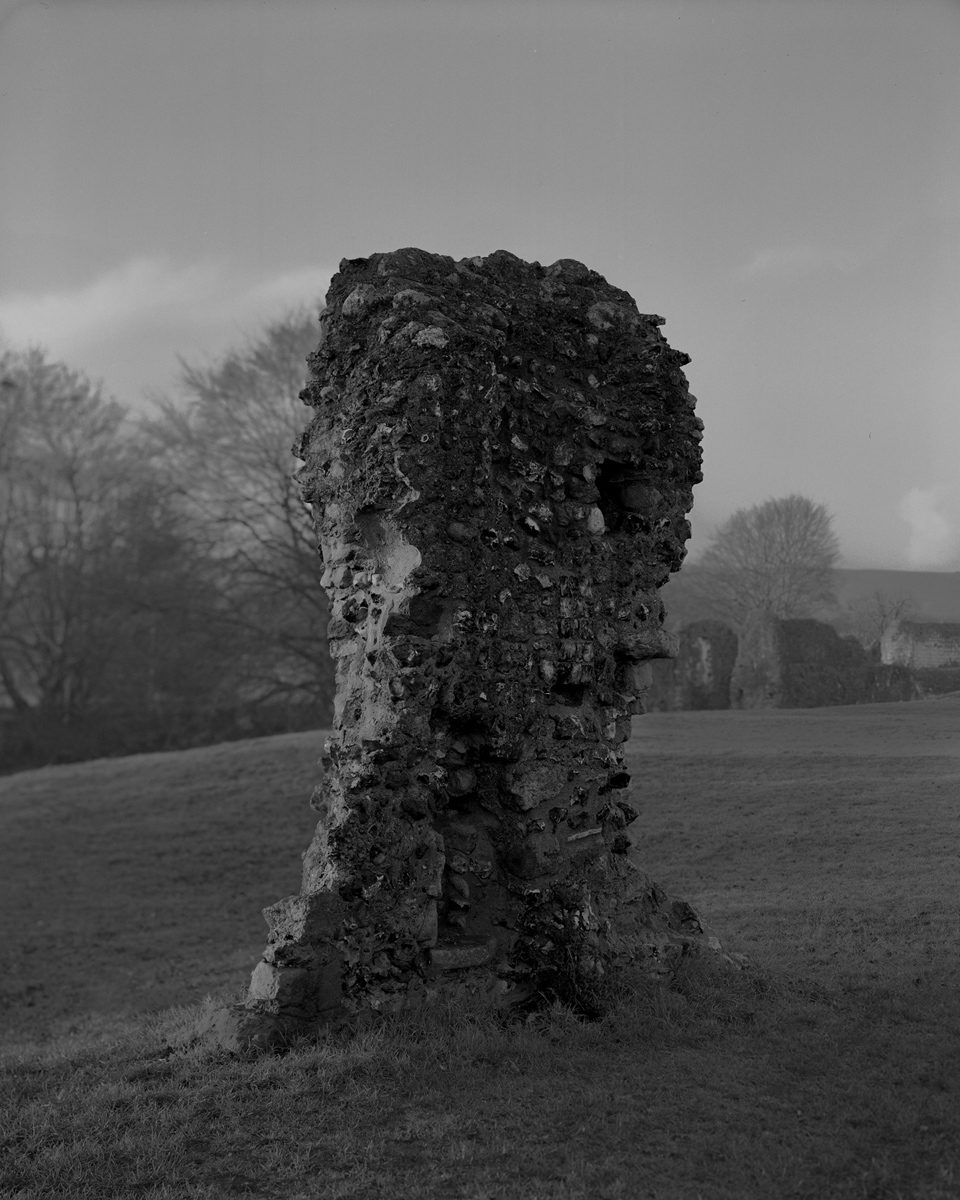
Lewes Priory
Gear
Camera: Ebony SW45Ti
Lens: Schneider Kreuznach Apo Symmar 150mm f/5.6 MC
Film: ILFORD HP5+ 5x4 sheet film
©Joe Charrington
About The Author

Joe Charrington
Joe Charrington (b. 1999) is a British photographer working mainly in and around east sussex. The British isles are woven with stories, tales and secrets that have been passed down through cascading lines of generations. Charrington’s photographs explore the dissonance, connections and bindings that underpin our relationship to the past and the landscape it blankets.
Instagram: www.instagram.com/joecharrington
Website: www.joecharrington.co.uk
Contact: charringtonjoe@gmail.com






